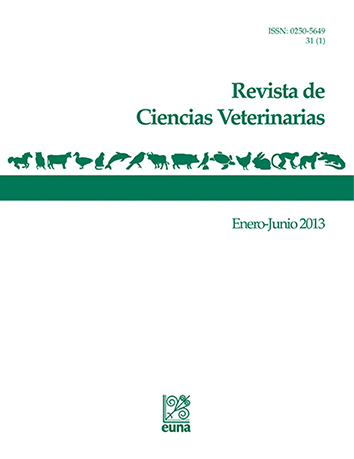First report of the presence of small hive beetle, Aethina tumida, in africanized honey bee colonies in Nicaragua. Technical Note.
Keywords:
small hive beetle, Aethina tumida, africanized bees, NicaraguaAbstract
The small hive beetle (SHB), Aethina tumida, is a pest in honey bee colonies that has spread south across the American continent. However, to date there are few reports of the presence of this beetle in Central American countries. This paper confirms that the beetles analyzed at the Bee Pathology lab of the Tropical Beekeeping Research Center coming from honeybee colonies in San Juan del Sur-Rivas correspond to the small hive beetle, Aethina tumida, which constitutes the first official report of this pest in africanized honey bee colonies in Nicaragua.
References
DEFRA. 2003. The Small Hive Beetle: a serious new threat to European apiculture. International Bee Research Association (IBRA), Cardiff, UK. 16 p.
Eischen, F., Baxter, J., Elzen, P. J., Westervelt, D. & Wilson, W. 1998. Is the Small Hive Beetle a Serious Pest of U.S. Honey Bee?. Am. Bee J. 138: 882-883.
Eischen, F., Westervelt, D. & Randall, C.H.. 1999. Does the Small Hive Beetle Have Alternative Food Source. Am. Bee J. 139: 125-126.
FERA. 2013. The Small Hive Beetle a serious threat to European apiculture. San Hutton, York, UK. 24 p.
Newman, P. & Ellis, J. 2008. The Small Hive Beetle (Aethina tumida Murray, Coleoptera: Nitidulidae): distribution, biology and control of an invasive species. J. Apic. Res. and Bee World 47: 181-183.
Stedman, M. 2006. Small Hive Beetle (SHB): Aethina tumida Murray (Coleoptera: Nitidulidae). Goverment of South Australia: Primary Industries and Resources. 13 p.
Thomas, M. 1998. Florida Pest Alert-The Small Hive Beetle. Am. Bee J. 138: 565-566.
Downloads
Published
How to Cite
Issue
Section
License
Licensing of articles
All articles will be published under a license:

Licencia Creative Commons Atribución-NoComercial-SinDerivadas 3.0 Costa Rica.
Access to this journal is free of charge, only the article and the journal must be cited in full.
Intellectual property rights belong to the author. Once the article has been accepted for publication, the author assigns the reproduction rights to the Journal.
Ciencias Veterinarias Journal authorizes the printing of articles and photocopies for personal use. Also, the use for educational purposes is encouraged. Especially: institutions may create links to specific articles found in the journal's server in order to make up course packages, seminars or as instructional material.
The author may place a copy of the final version on his or her server, although it is recommended that a link be maintained to the journal's server where the original article is located.
Intellectual property violations are the responsibility of the author. The company or institution that provides access to the contents, either because it acts only as a transmitter of information (for example, Internet access providers) or because it offers public server services, is not responsible.







